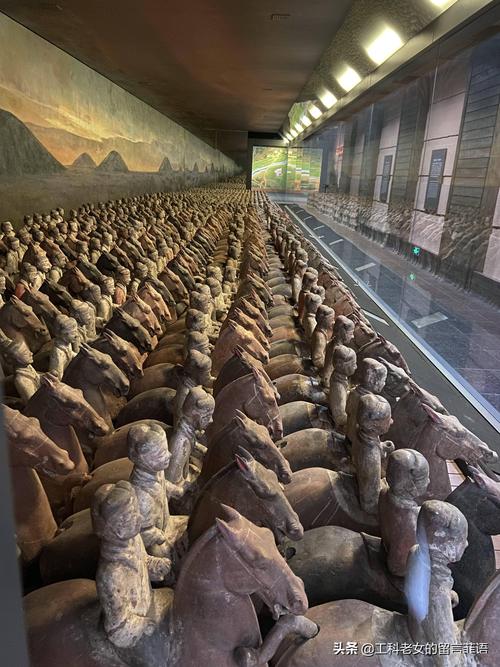
The Terracotta Army: Guardians of Emperor Qin Shi Huang
The First Emperor of China
Qin Shi Huang (d. 210 B.C.) holds a unique place in Chinese history as the first emperor to unify the warring states under the Qin dynasty. He achieved this monumental feat in 221 B.C., bringing an end to centuries of conflict and ushering in an era of unprecedented unity and centralized rule. His reign marked a turning point in Chinese history, paving the way for the development of a unified Chinese identity and culture.
A City Mirrored in Death
Qin Shi Huang's vision extended beyond his earthly life. Obsessed with immortality and driven by the desire to rule in the afterlife, he commissioned the construction of a magnificent mausoleum complex, a microcosm of his empire, shortly after ascending the throne. Situated near the ancient capital of Xianyang, the tomb complex sprawls over a vast area, estimated to be larger than 50 square kilometers.
The Terracotta Army: An Army for Eternity
One of the most astounding features of Qin Shi Huang's tomb complex is the discovery of the Terracotta Army in 1974. These life-sized, intricately crafted terracotta figures, numbering in the thousands, stand in military formation, poised to protect their emperor in the afterlife. Each warrior is unique, with individual facial features, hairstyles, and armor, showcasing the advanced craftsmanship of the Qin dynasty.
The sheer scale and detail of the Terracotta Army are a testament to the power and ambition of Qin Shi Huang. It is believed that the creation of this vast army involved the labor of over 700,000 workers over a period of several decades. The figures were originally painted in vibrant colors, further highlighting their lifelike appearance, though much of the paint has faded over the centuries.
The Tomb Complex: A Microcosm of the Empire
The Terracotta Army represents only a fraction of the vast tomb complex. Archaeological excavations have revealed other wonders, including chariots, horses, and the remains of sacrificed animals, all intended to serve the emperor in the afterlife. The tomb itself, according to historical records, is said to contain a treasure trove of riches and even a map of his empire with rivers of flowing mercury. However, the main tomb remains unexcavated due to concerns over the potential damage that exposure to air could cause to the preserved artifacts within.
A Legacy Etched in Clay
The discovery of the Terracotta Army and the ongoing exploration of Qin Shi Huang's tomb complex continue to captivate the world. These silent sentinels, frozen in time, offer a glimpse into the grandeur and might of the Qin dynasty and the ambition of its first emperor. They stand as a testament to the extraordinary artistry and craftsmanship of ancient China, and their story continues to unfold with each new discovery.
Q&A
Q: What is the significance of the terracotta army?
A: The terracotta army is significant because it represents the military might and ambition of Qin Shi Huang, the first emperor of China. It also provides valuable insights into the artistry, craftsmanship, and funerary practices of the Qin dynasty.
Q: Why was the terracotta army built?
A: The terracotta army was built to accompany Qin Shi Huang in the afterlife and protect him from his enemies. The ancient Chinese believed that objects buried with the dead would be available to them in the afterlife.
Q: Where is the terracotta army located?
A: The terracotta army is located within the mausoleum complex of Qin Shi Huang, near the city of Xi'an, in Shaanxi province, China.